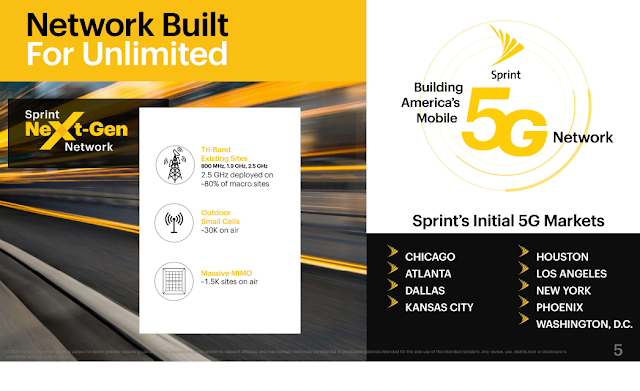The Quad Small Form Factor Pluggable Double Density (QSFP-DD) Multi Source Agreement (MSA) released two updated specifications: Common Management Interface 4.0 and Hardware Specification 5.0.
QSFP-DD is an 8-lane data center module form factor. Systems designed for QSFP-DD modules can be backward compatible with existing QSFP form factors and provide maximum flexibility for end users, network platform designers, and integrators.
 The updated Common Management Interface Specification (CMIS) revision 4.0 can be used as a common interface by other 2, 4, 8 and 16 lane form factors, in addition to QSFP-DD. Other notable features include firmware upgrade, diagnostic capabilities, improved State Machine support as well as support for WDM / Coherent modules.
The updated Common Management Interface Specification (CMIS) revision 4.0 can be used as a common interface by other 2, 4, 8 and 16 lane form factors, in addition to QSFP-DD. Other notable features include firmware upgrade, diagnostic capabilities, improved State Machine support as well as support for WDM / Coherent modules.
The updated hardware specification revision 5.0 for QSFP-DD. This update supports up to 20 watts with improved thermal management. It includes new optical connectors; SN and MDC, a label area specification, improved latching definition and enhanced Pulse Per Second (ePPS) pin.
“Through strategic collaborations with our MSA companies, we continue to test the interoperability of multiple vendors’ modules, connectors, cages and DAC cables to assure a robust ecosystem,” said Scott Sommers, founding member and MSA co-chair. “We remain committed to developing and providing next-generation designs that evolve with the changing technology landscape.’’
“As the industry continues to converge on QSFP-DD, we believe the economies of scale will manifest and allow 400GbE to reach its full potential,” said Mark Nowell, founding member and MSA co-chair. “We are excited to share new updates and grow the previous thermal and high-speed signal integrity validation previously shared by the MSA.”
Contributors include Acacia, ACON, Alibaba, Amphenol, Applied Optoelectronics, APRESIA Systems, Celestica, Ciena, ColorChip, Credo, Dell EMC, Delta Products, Dust Photonics, Eoptolink, Fourte, Fujitsu Optical Components, Genesis, H3C, Hisense Broadband, Hitachi Metals, Hewlett Packard Enterprise, InnoLight, Innovium, Inphi, JPC, Kaiam, Keysight Technologies , LEONI, Lorom, Luxshare-ICT, MACOM, Marvell, MaxLinear, MultiLane, NeoPhotonics, Nokia, Panduit, PHY-SI, Ranovus, Samtec, SENKO, Semtech, Sicoya, Siemon, Skorpios Technologies, Source Photonics, Spectra7 Microsystems, Spirent, Sumitomo Electric, US Conec, Xilinx and Yamaichi Electronics.
The QSFP-DD MSA specifications are available for free download at the QSFP-DD MSA website
http://www.qsfp-dd.com
QSFP-DD is an 8-lane data center module form factor. Systems designed for QSFP-DD modules can be backward compatible with existing QSFP form factors and provide maximum flexibility for end users, network platform designers, and integrators.
 The updated Common Management Interface Specification (CMIS) revision 4.0 can be used as a common interface by other 2, 4, 8 and 16 lane form factors, in addition to QSFP-DD. Other notable features include firmware upgrade, diagnostic capabilities, improved State Machine support as well as support for WDM / Coherent modules.
The updated Common Management Interface Specification (CMIS) revision 4.0 can be used as a common interface by other 2, 4, 8 and 16 lane form factors, in addition to QSFP-DD. Other notable features include firmware upgrade, diagnostic capabilities, improved State Machine support as well as support for WDM / Coherent modules.The updated hardware specification revision 5.0 for QSFP-DD. This update supports up to 20 watts with improved thermal management. It includes new optical connectors; SN and MDC, a label area specification, improved latching definition and enhanced Pulse Per Second (ePPS) pin.
“Through strategic collaborations with our MSA companies, we continue to test the interoperability of multiple vendors’ modules, connectors, cages and DAC cables to assure a robust ecosystem,” said Scott Sommers, founding member and MSA co-chair. “We remain committed to developing and providing next-generation designs that evolve with the changing technology landscape.’’
“As the industry continues to converge on QSFP-DD, we believe the economies of scale will manifest and allow 400GbE to reach its full potential,” said Mark Nowell, founding member and MSA co-chair. “We are excited to share new updates and grow the previous thermal and high-speed signal integrity validation previously shared by the MSA.”
Contributors include Acacia, ACON, Alibaba, Amphenol, Applied Optoelectronics, APRESIA Systems, Celestica, Ciena, ColorChip, Credo, Dell EMC, Delta Products, Dust Photonics, Eoptolink, Fourte, Fujitsu Optical Components, Genesis, H3C, Hisense Broadband, Hitachi Metals, Hewlett Packard Enterprise, InnoLight, Innovium, Inphi, JPC, Kaiam, Keysight Technologies , LEONI, Lorom, Luxshare-ICT, MACOM, Marvell, MaxLinear, MultiLane, NeoPhotonics, Nokia, Panduit, PHY-SI, Ranovus, Samtec, SENKO, Semtech, Sicoya, Siemon, Skorpios Technologies, Source Photonics, Spectra7 Microsystems, Spirent, Sumitomo Electric, US Conec, Xilinx and Yamaichi Electronics.
The QSFP-DD MSA specifications are available for free download at the QSFP-DD MSA website
http://www.qsfp-dd.com






















